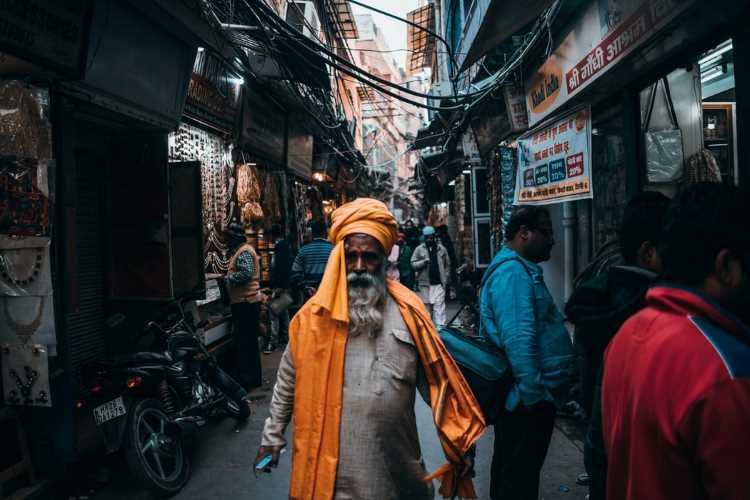
UNDP human development report: The UNDP published its regional human development report for Asia and the Pacific earlier this week. The report, titled ‘Making Our Future: New Directions for Human Development in Asia and the Pacific’, scrutinises the income and wealth distribution trends in Asia Pacific. It calls for swift action and new directions to advance the region’s human development.
The report says that the region faces three converging risk clusters — existential threats due to climate change and future pandemics; economic headwinds from shifting globalisation patterns and automation; and the slow pace of reform due to diminishing democratic spaces, rising populism, and polarisation.
The human development report commends India’s achievements in improving living standards and reducing poverty, but also casts a spotlight on the growing wealth and income inequalities. India has advanced in terms of living standards and poverty alleviation. The nation’s per capita income leaped from $442 to $2,389 in the period from 2000 to 2022. Concurrently, the proportion of the population living in poverty plummeted from 40% to 10% between 2004 and 2019, using the global poverty benchmark of $2.15 per day. Also noteworthy is the reduction of multidimensional poverty, down from 25% to 15% between 2015-16 and 2019-21.
READ | OCEN: A breakthrough that can help MSMEs access credit
The report underscores these successes, noting how India’s economic growth has significantly cut poverty levels, outperforming many other countries, particularly in sub-Saharan Africa. India’s rapid economic expansion has been pivotal in elevating millions from extreme poverty.
Areas of concern
The report identifies several concerns with the distribution of wealth and income. Despite considerable strides against financial poverty, millions in India remain impoverished. Areas home to 45% of the population harbour 62% of the nation’s poor, reflecting a stark poverty imbalance. The report also warns that vulnerable groups—including women, unpaid workers, and interstate migrants—risk slipping back into poverty.
Income distribution in India has become alarmingly unequal over time. The wealthiest 10% command 57% of the national income, with the top 1% alone claiming 22%. Such levels of income inequality rank among the highest in the world. Moreover, the richest 10% possess 65% of the nation’s wealth, mirroring the skewed wealth distribution. The document points to mounting evidence of wealth inequality, which has notably intensified since 2000.
The recommendations
The human development report advises India to address these persistent inequalities through multiple strategies. It stresses the importance of focusing on poverty-stricken states and executing targeted interventions and policies to mitigate poverty disparities.
Empowering marginalised communities, including women, informal workers, and interstate migrants, is deemed crucial. Enhancing their access to jobs, healthcare, and education could help prevent a relapse into poverty and drive inclusive growth.
The necessity of robust social safety nets and basic services is also emphasised, ensuring the widespread benefits of economic growth. Reinforcing tax regulations, improving administrative processes, and combating corruption are suggested to tackle wealth inequality and promote equitable resource distribution.
The report calls for a comprehensive approach to the root causes of income and wealth disparities. This entails grappling with the challenges posed by technological advancements and globalisation, which have disproportionately benefited certain groups. Crafting policies that ensure the fair sharing of economic growth’s benefits across all societal strata is essential.
The Regional Human Development Report for Asia and the Pacific 2024 illuminates India’s income and wealth disparities, acknowledging the progress in reducing poverty while pointing out the significant inequalities that remain. By implementing the recommended strategies, India can aspire to a more egalitarian and inclusive society, where the fruits of economic development are shared by all.
Human development report: The way ahead
To address the risk clusters, the report proposes three new directions for human development:
Putting people first: This involves empowering people to participate in decision-making processes, ensuring equitable access to opportunities, and fostering social cohesion.
Recalibrating growth strategies: This requires shifting focus from GDP growth to more inclusive measures of progress, promoting sustainable economic practices, and investing in green infrastructure and renewable energy.
Focusing relentlessly on reforms: This entails strengthening democratic institutions, promoting effective governance, and ensuring that policies and programs are based on evidence and data.
The human development report provides recommendations for specific policy actions in various areas, such as education, healthcare, social protection, and environmental sustainability. It emphasises the need for regional cooperation and collaboration to address shared challenges and build a more inclusive and sustainable future for Asia and the Pacific.
(Md Quaisar Ali is a Ph.D. scholar at the Department of Economics and Finance, BITS Pilani KK Birla Goa Campus.)

